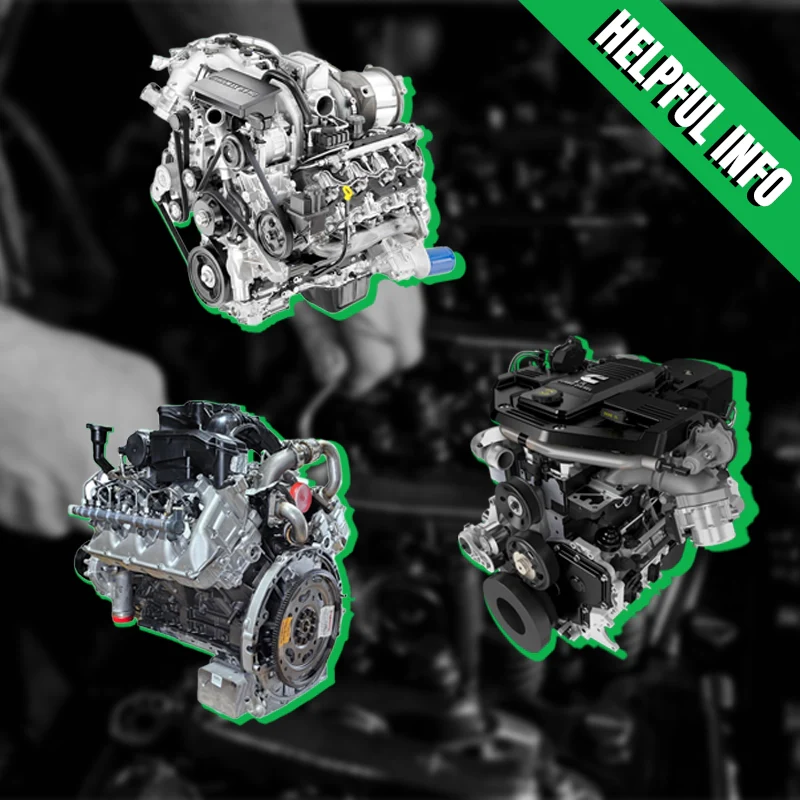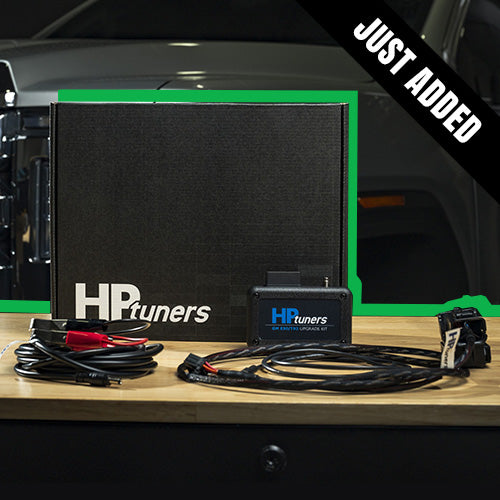

Common Issues and Solutions for the Latest 6.7L Power Stroke, 6.7L Cummins, and L5P Duramax Engines
When investing in a new or late model heavy-duty diesel truck, understanding potential issues specific to each engine platform is crucial for maintenance and longevity. And look, if you think we’re going to just jump out and “fanboy” over a single powerplant, we’re not. We don’t shill for a brand, we support (or address the issues with) all of them.
What we WILL say is this: each one of these engines is pretty danged stout. It’s easy to lose sight of the fact that thirty years ago, we were excited about 400 ft. lbs of torque in a diesel engine. Nowadays, those are the numbers small diesels, like the 2.8 liter Duramax in the Colorados, are putting out. This guide focuses on the latest versions of the 6.7L Power Stroke, 6.7L Cummins, and L5P Duramax engines, and the point is simply to report the commonly documented problems and the known solutions. And yes, along the way, we’re going to touch on some other pieces of the puzzle, like the transmission, interior, and suspension concerns to provide a comprehensive overview.
Buying a new or late model truck isn’t a cheap decision, and ensuring your investment lasts AND performs the way you need it to is critical to you and our team here at Alligator Performance
6.7L Power Stroke

Introduced by Ford in 2011, the current 6.7L Power Stroke has undergone several updates to enhance performance and reliability. Despite its advancements, owners have reported some pretty specific issues enough to warrant sharing them here:
1. Turbocharger Failures
Early models (2011-2012) experienced turbocharger failures due to weak ceramic ball bearings in the Honeywell DualBoost turbo. Failures were characterized by loud screeching sounds and smoke from the tailpipe. Ford addressed this by switching to steel ball bearings in later models.
Solution: For affected models, upgrading to the revised turbocharger with steel bearings is recommended. Regular maintenance and allowing the turbo to cool after heavy use can also prolong its lifespan.
2. Radiator Leaks
Some 2011 models experienced radiator leaks due to manufacturing defects. While later models saw fewer issues, leaks can still occur over time.
Solution: Regularly inspect the radiator for signs of leakage. If a leak is detected, replacing the radiator with an updated version can prevent future problems.
3. NOx Sensor Failures
Failures of NOx sensors in 2011 models led to reduced engine power. Ford's Custom Satisfaction Program 12B33 addressed this by replacing faulty sensors and updating the emission control strategy.
Solution: Ensure that your vehicle's software is up-to-date and replace faulty sensors promptly to maintain optimal engine performance.
4. Transmission Concerns
he 6.7L Power Stroke is paired with Ford's TorqShift series transmissions. Even the most modern 10 speed version has been noted to have some challenges, while generally robust, some owners have reported:
- Shift Flare: Unexpected RPM increases during gear changes.
- Harsh Shifting: Abrupt gear transitions, especially between 3rd and 4th gears.
- Complete Transmission Failures: It’s hard to say it’s a design issue or a user issue, but the fact is, those reports are out there, and knowing what you’re buying and what kind of warranty you’ve got is important.
Solution: Regular transmission fluid changes and software updates can alleviate most of the known issues. In persistent cases, consulting a transmission specialist is advisable.
5. Interior and Suspension
Owners have praised Ford's interior for comfort and advanced technology. However, some have noted:
- Sync System Glitches: Intermittent issues with the infotainment system.
- Front Suspension Wear: Premature wear of ball joints and tie rods, especially under heavy-duty use.
Solution: Regular software updates can resolve Sync issues. For suspension concerns, periodic inspections and timely replacement of worn components are essential.
6.7L Cummins

Renowned for its durability, the 6.7L Cummins engine powers Ram's heavy-duty lineup. Despite its reputation, certain issues have been identified:
1. Fuel System Contamination
The 6.7L Cummins is sensitive to fuel quality. Contaminated fuel can lead to injector failures and clogged fuel filters.
Solution: Use high-quality fuel from reputable sources. Installing additional fuel filtration systems can provide extra protection against contaminants.
2. Exhaust Gas Recirculation (EGR) Issues
EGR system failures can lead to decreased performance and increased emissions.
Solution: Regular cleaning and maintenance of the EGR system are essential. In some cases, replacing the EGR valve may be necessary to restore optimal function.
3. Transmission Concerns
The 6.7L Cummins is often mated to the 68RFE or Aisin AS69RC transmissions. Reported issues include:
- 68RFE: Known for torque converter and clutch pack failures under heavy loads.
- Aisin AS69RC: Generally more robust but can experience harsh shifting.
Solution: For the 68RFE, aftermarket torque converters and valve body upgrades can enhance durability. Regular maintenance and fluid changes are crucial for both transmissions.
4. Interior and Suspension
Ram trucks offer comfortable interiors, but some owners have reported:
- Interior Wear: Premature wear of seat materials and dashboard components.
- Air Suspension Issues: Failures in the air suspension system, leading to uneven ride height.
Solution: Using seat covers and sunshades can protect interior materials. Regular inspection of the air suspension system and prompt repairs are essential to maintain ride quality.
L5P Duramax

General Motors introduced the L5P Duramax in 2017, featuring significant improvements over its predecessors. While it's a robust engine, certain issues have been observed:
1. Fuel Injector Harness Chafing
The injector harness can rub against engine components, leading to electrical issues and injector malfunctions.
Solution: Regularly inspect the harness for signs of wear. Securing the harness away from contact points can prevent chafing.
2. DEF Heater Failures
Malfunctions in the Diesel Exhaust Fluid (DEF) heater can trigger warning lights and affect emissions control.
Solution: Replacing the DEF heater with an updated unit can resolve this issue. Ensuring the DEF system is maintained according to manufacturer guidelines is also crucial.
3. Transmission Concerns
The L5P Duramax is paired with the Allison 1000 transmission and the newer Allison 10L1000, both known for their strength and durability. However, some owners have reported:
- Torque Converter Shudder: Notable vibration during acceleration.
- Shift Hesitation: Delayed gear engagement, particularly when shifting from reverse to drive.
- The 10L1000 Units: Seem to have unexplained leaks, and enough failures to make us questions what’s really going on. (For more information on the 10L1000, see our earlier article from March for a deep dive into the 10L1000 and the challenges it’s given owners…)
Solution: Regular transmission fluid changes and, if necessary, installing a high-capacity transmission cooler can mitigate these issues.
4. Interior and Suspension
Owners of GM trucks with the L5P Duramax have noted:
- Interior Material Wear: Wear on seats and armrests over time.
- Suspension Components: Premature wear of components like control arm bushings and ball joints.
Solution: Applying protective coatings and using seat covers can preserve interior materials. Regular suspension inspections and timely replacement of worn parts are recommended to maintain optimal ride quality.
Conclusion: Who’s the “Winner”?

Understanding the common issues associated with the latest 6.7L Power Stroke, 6.7L Cummins, and L5P Duramax engines lets owners take proactive measures. Regular maintenance, prompt attention to emerging problems, and utilizing quality replacement parts are key to ensuring the longevity and reliability of these powerful diesel engines.
Determining a definitive "winner" among the 6.7L Power Stroke, 6.7L Cummins, and L5P Duramax drivetrains is challenging, as each offers unique strengths tailored to different user preferences and requirements.
Here's our take on these trucks and engines, in no particular order…
1. Engine Performance and Reliability
- 6.7L Power Stroke: Ford's latest iteration boasts impressive horsepower and torque, delivering robust performance. It has also demonstrated enhanced reliability over previous versions.
- 6.7L Cummins: Renowned for its durability, the Cummins engine is a time-tested inline-six design favored for heavy-duty applications. Its straightforward architecture often appeals to those prioritizing ease of maintenance.
- L5P Duramax: General Motors' L5P offers a balance of power and efficiency, with advancements addressing past issues. Users have noted its smooth power delivery and strong performance metrics.
Each drivetrain excels in specific areas:
- Ford's 6.7L Power Stroke is ideal for those prioritizing technology-driven raw power and a solid front axle for rugged conditions. Like Ram, Ford has found a powerplant that works and sorted out the bugs, and while there are some quality issues they have to in other areas, these trucks retain a very modern feel even with a few years on them.
- Ram's 6.7L Cummins appeals to enthusiasts valuing a proven engine design with straightforward maintenance. While Ram has all the “creature comforts” you can expect for the sort of money these trucks fetch, you can get the feeling you’re a generation behind Ford and GM in terms of the interior and technology.
- GM's L5P Duramax offers a balance of performance and ride comfort, with a reputable transmission system. We’re not shilling for anybody, but GM really has built “luxury” into their trucks now for several generations, and both the price tags and the retained value show it.
Ultimately, the "best" choice depends on your needs, your budget, and your goals - intended use, maintenance preferences, and desired comfort levels.
Learn More
Was this article helpful? Pass it on
- Choosing a selection results in a full page refresh.
!









